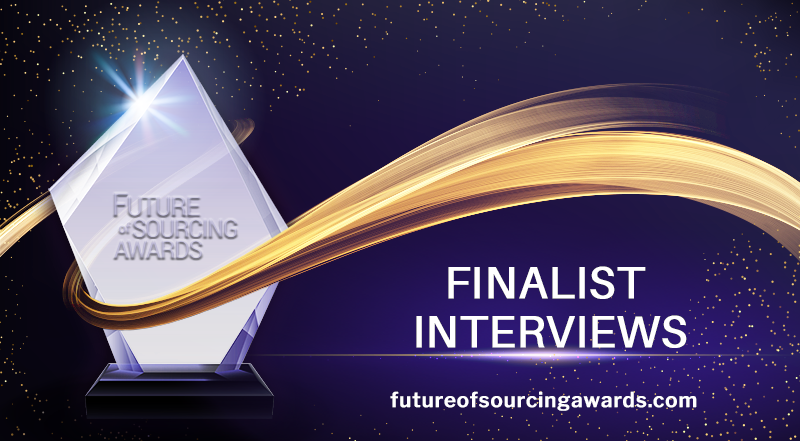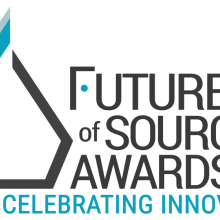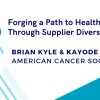1) Can you outline why your team embarked on this project and the problem that needed to be solved?
This joint project between Bayer and GEP was to address a series of critical challenges faced by Bayer's procurement function. It was struggling to deliver increased value to its business operations, implement improvements to third-party costs, enhance working capital and maintain high service standards in a complex global supply environment. Additionally, there was a need to achieve major reductions in procurement operating costs. To address these hurdles, Bayer required a fundamental shift in their procurement operations and decided to change to a center-led operating model while outsourcing part of the procurement activity. GEP was selected to provide a managed service following a highly competitive selection process.
The primary goal was to transform Bayer's procurement function into a best-in-class operation. This entailed deploying a more standardized and efficient global operating model to deliver increased value to the business, achieving significant reductions in procurement operating costs, and improving service standards.
2) How were things done originally and what was the inspiration to innovate the process?
Initially, Bayer's procurement operations were handled in a decentralized manner, with each division or region managing its own procurement strategies and supplier relationships. However, this approach led to inconsistencies across the organization, making it challenging to fully leverage its global buying power or implement a standardized procurement strategy.
The inspiration to innovate the process came from several key drivers:
The need to deliver increased value to the business by improving third-party costs, enhancing working capital, and maintaining high service standards.
The requirement to achieve significant reductions in procurement operating costs.
The complexity of Bayer's global supply environment, which necessitated a more efficient and standardized procurement model to optimize operations.
3) What KPIs did you use to measure success for this project? (For example: performance, customer satisfaction, revenue, sales or relevant financial gains?)
The implementation of the CLM tool has resulted in significant outcomes, driving process efficiency, customer satisfaction, compliance, and risk management. Examples of achievements we have attained and the KPIs we used to measure:
- The success of the project was measured using various Key Performance Indicators (KPIs) that were tracked through a global procurement scorecard. These metrics included:
- Cost savings, OPEX reduction and profitability achieved through the transformation.
- Supply base consolidation
- Spend through preferred and qualified suppliers.
- Tool adoption.
- Improvement in free cash flow (FCF).
- The level of purchase order (PO) automation.
- SLA performance
- Client satisfaction
- Audit results and spend report accuracy
4) How do you plan to ensure that the new model remains relevant and adapts to the future needs of the market?
Our plan focuses on continuous improvement approach, leveraging user engagement, data driven insights and a commitment to keep abreast with business and industry shifts.
To ensure the new model remains relevant and adapts to the future needs of the market, Bayer and GEP have developed a partnership vision in alignment with a 1.0, 2.0, 3.0 structure. This approach represents the phases of stabilization, optimization, and aspirational vision for the partnership.
1.0 represents the stabilization of key partnership elements such as understanding scope, consistent service quality and delivery against all defined KPIs. This has been achieved. In the 2.0 phase, the focus is on optimizing processes, refining the operating model, and enhancing partnership behaviors. To stay ahead of evolving market trends, the 3.0 phase emphasizes further integration of digital tools and contributions in strategic areas like sustainability, M&A, and category transformation.
Agile approaches and digital initiatives using AI, low-code platforms, and RPA are utilized to identify, prioritize, and execute improvements. These initiatives include enhancing the user buying experience with AI-enabled conversational interfaces and digitizing the procurement category strategy creation and maintenance process.
Flexibility and efficiency are essential aspects of the evolving partnership. This includes periodic reviews of outsourced spend categories and changes to KPIs to reflect shifting business priorities. Continuous improvement is emphasized, and ongoing digital innovation and process optimization are essential for sustainable value delivery.
5) What advice do you have for those who may want to implement this innovative approach in their own organizations?
Start by thoroughly understanding the need for such a transformation. Identify the critical challenges and problems that your procurement function is facing. Clearly articulate the pain points and bottlenecks that hinder procurement efficiency and effectiveness.
Once the problems are identified, develop a compelling business case that highlights how the new approach will lead to improvements. Quantify the expected benefits, such as cost savings and efficiency gains, to garner support from stakeholders and executive leadership.
To successfully execute the transformation, it is crucial to formulate a well-defined strategy that aligns with your organization's goals and priorities. Consider partnering with a reputable service provider that can offer specialized expertise and support during the transition and beyond to establish an aspiration vision building upon the joint capabilities of both parties which serves as a ‘north star’ for the partnership.
Collaboration and communication are essential throughout the entire transformation journey. Engage with key stakeholders, procurement teams and business units to ensure buy-in and commitment to the new operating model.
As with any significant organizational change, there will be challenges along the way. Prioritize risk assessment and develop comprehensive mitigation plans to address potential roadblocks. Finally, clearly defined roles and responsibilities supported by an enabling governance structure are critical. Clear operating model, RACI and governance are all critical success factors.
6) What factors do you think are the most important to consider when innovating in this category?
When innovating in procurement, it is essential to consider a holistic approach that will deliver increased value to the business - this should be the overarching goal of any procurement transformation.
Recognize the complexity of the global supply environment and the challenges it presents. To overcome these challenges, consider implementing a more standardized and efficient operating model. Centralize procurement activities where appropriate to achieve better visibility, control, and coordination across the organization. Leverage digital tools, data analytics, and automation to drive efficiencies and improve decision-making.
A successful procurement innovation should prioritize risk assessment and mitigation plans. Identify potential obstacles that could hinder the transformation and develop strategies to address them effectively. Establish a structured governance framework with clear roles and responsibilities to ensure accountability and transparency throughout the process.
Outcome-oriented metrics are crucial for measuring the success of the innovation. These metrics should be aligned with the organization's strategic objectives and provide clear insights into the value created by the procurement transformation.
It is also critical to continually adapt. Structure relationships with a sufficient degree of contractual and commercial flexibility. Allow breathing room to grow and evolve.
Safeguarding the future benefits of the innovation requires a forward-thinking approach. Be adaptable and flexible to changing market conditions and business needs. Foster a culture of continuous improvement and learning, encouraging the organization to stay at the forefront of industry trends and best practices.









